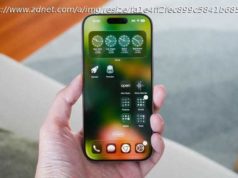From Star Wars to the MCU, the trend for de-aging or even digitally resurrecting old actors is becoming a major part of Hollywood. Digital Domain is one visual effects company leading the charge. Here’s how they create their digital actors — and what it means for the future of movies.
P icture the scene. You’re a struggling actor in your twenties, auditioning for the role of a lifetime in a major Hollywood movie. You nailed the first audition, and the casting director has since summoned you back twice to audition again. At the last callback, Steven Spielberg — the movie’s director — was even in the room. Your agent tells you it’s come down to you and one other actor. Then you get the call. The news isn’t good. The other person got it. “Who did they give the role to?” you ask, trying to conceal your abject disappointment. “Let me check,” your agent says, putting you on hold. Her voice comes back on the line. “They gave it to 1955-era James Dean,” she tells you.
Impossible, right? Only, it’s very much not. Anyone who has been keeping their eyes open at the movies for the past few years (and, frankly, why waste the price of a ticket by shutting them?) will have seen the resurgence of certain actors who don’t appear to belong in 2018.
The point at which everyone realized that something was going on may well have been 2016’s Rogue One: A Star Wars Story, which dusted off Peter Cushing, the legendary British actor who passed away in 1994, for one more cinematic hurrah. Since then, we’ve seen the digital “de-aging” of Michael Douglas, Robert Downey Jr., and Samuel L. Jackson in assorted Marvel movies, Arnold Schwarzenegger in Terminator Genisys, Orlando Bloom in two of the Hobbit movies, Johnny Depp in Pirates of the Caribbean: Dead Men Tell No Tales, and more. In 2018, the movie industry is more in love with digitally recreating the past than it is in back-patting award ceremonies and power lunches at West Hollywood’s Soho House.
This was not the start of it, of course. In Ridley Scott’s 2000 movie Gladiator, actor Oliver Reed’s scenes were completed using a digitally constructed face mapped onto a body double after the actor passed away during filming. In that instance, however, it was intended as less a feature than a way to finish the movie without having to completely reshoot Reed’s entire performance with another actor. A similar occurrence took place at the end of the second season of HBO’s The Sopranos, after actress Nancy Marchand — who played Tony Soprano’s overbearing mother — died during production. Her final scene in the show is a weird, unsettling mixture of awkward CGI footage and audio pulled from old episodes.
Things have come a long way. No longer a hacked-together workaround, digital recreations of actors are now convincing enough to front million-dollar ad campaigns. In the U. K., the likeness of actress Audrey Hepburn was digitally revived to sit on a bus on the Amalfi Coast, eating a Galaxy chocolate bar. In the States, Dior created a star-studded ad campaign in which Marilyn Monroe, Princess of Monaco Grace Kelly, and Marlene Dietrich appeared on screen with Charlize Theron to hawk perfume. This was, shall we say, the tipping point.
It’s into this space that new visual effects companies such as Digital Domain have began to carve out a name for themselves. Located in Playa Vista, on the westside of Los Angeles, California, Digital Domain sprang to life (or, more accurately, into the digital life business) in the 2010s. It has now worked on both major Hollywood movies and also in the music industry, where it was famously responsible for bringing the late Tupac Shakur to Coachella in 2012.
You can think of its work a bit like that famous “It’s alive!” scene from 1931’s Frankenstein — only that instead of resurrecting the undead by pulling levers in some underground gothic laboratory, the work is done is done by clicking a mouse a bunch of times in a trendy LA edit suite. At the end of the day, the results are the same, though: all the undead celebrities you could wave a flaming torch at. Or, at least, younger-looking living ones.
“A whole series of technologies are used in the preserving of someone’s likeness or the creation of a deceased celebrity,” Digital Domain employee Darren Hendler, whose official job title is “Head of Digital Humans,” told us. “We use a combination of technologies offered by others, and some developed internally at Digital Domain. The creation of a realistic well-recognized moving human face is one of the hardest challenges in computer graphics today. It requires a wide variety of different technologies to capture all the elements that make up an individual. Our brains process all of this in milliseconds. We focus primarily on the face as it is the key area of the human body that you first take notice. If we miss slight details of the body no one really notices but change a smile by a few millimeters and suddenly it no longer looks like the person.”
This is an important point. The effect of having something slightly “off” about a digitally recreated person is, at best, distracting and, at worst, extremely off putting. This “uncanny valley” effect was first studied by Dr. Masahiro Mori in Japan during the 1970s, initially related to robots. Today, it most clearly applies to digital recreations of human faces — and the results of getting it wrong can be disastrous.
For instance, in its review of the 2004 movie The Polar Express, CNN noted that the use of CGI to recreate (the very much alive) Tom Hanks digitally did not entirely work. “This season’s biggest holiday extravaganza…should be subtitled ‘The Night of the Living Dead,’” the review read. “The characters are that frightening. This is especially disheartening since there’s so much about this technologically groundbreaking movie…that’s astounding.”
There are three elements involved in Digital Domain capturing and creating a digital human. The most obvious of these is, of course, the appearance. In order for an actor to look like, well, themselves, it’s essential to capture the look and shape of their face, their eyes, and their hair. Digital Domain achieves this by using high-end scanners to capture every detail of a person’s face down to the pore level.
“We even capture how blood flow changes the coloration of the skin when it goes into different expressions,” Hendler explained. “Part of the technology used in this stage allows us to differentiate the way that light interacts with skin, including the look of the skin that absorbs the light and the look of the light that gets reflected off.”
After this comes the equally important facial motion bit: capturing how their face moves and changes expression. This is done using a technology from the company Dimensional Imaging, designed to capture faces in motion. It achieves this by tracking thousands of points on the face alone as it shifts from one expression to another. Using this data, combined with Digital Domain’s own in-house technology, it’s possible to create a model showcasing the unique way that each actor’s skin moves over the underlying muscle structure on their face.
Finally, these two digital elements are then composited onto another actor or stand-in performer, who “wears” the face of the digital thespian to act out the scenes. Just like stand-ins for nude scenes, this means matching up the body type of a target actor with another who broadly resembles them.
Start
United States
USA — software Meet the startup resurrecting dead celebrities and digitally cloning living ones






